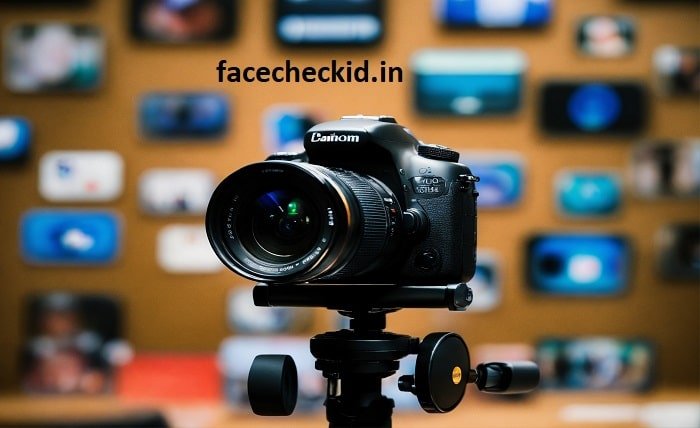The World of Fake Videos: Identifying, and Combatting Deception

Fake videos have become increasingly prevalent in the digital age, leveraging advanced technology to deceive and mislead viewers. These videos, which often use sophisticated editing and deepfake technology, can present manipulated or entirely fabricated content as genuine. The rise of fake videos poses significant challenges for media literacy and trust in digital content. Understanding fake videos, their creation methods, and their impact is crucial for navigating the modern information landscape.
Types of Fake Videos
Fake videos come in various forms, each serving different purposes:
- Deepfake Videos: These use artificial intelligence to superimpose faces onto bodies, creating realistic but fabricated content.
- Misinformation Videos: These videos present false or misleading information, often manipulating facts to fit a particular narrative.
- Satirical or Parody Videos: While intended for humor, these videos can sometimes be mistaken for genuine content, leading to confusion.
- Propaganda Videos: Created to influence public opinion, these videos often distort reality to support specific agendas.
Each type of fake video can have different effects and implications, making it essential to recognize their characteristics.
How Fake Videos Are Created
Creating fake videos typically involves advanced editing techniques and software. Deepfake technology, for example, uses machine learning algorithms to analyze and replicate facial expressions and movements, creating highly convincing fakes. Other methods include traditional video editing software that can alter content, add misleading elements, or manipulate audio. The sophistication of these techniques can make fake videos challenging to detect, requiring careful scrutiny and technological solutions to identify.
The Impact of Fake Videos on Society
Fake videos can have a profound impact on society by spreading misinformation, influencing public opinion, and damaging reputations. They can contribute to the erosion of trust in media and institutions, making it harder for individuals to discern fact from fiction. In some cases, fake videos can incite panic, spread false rumors, or even interfere with political processes. Understanding the impact of fake videos is crucial for developing strategies to mitigate their effects and maintain a well-informed public.
Identifying Fake Videos
Detecting fake videos requires a combination of critical thinking and technical tools. Here are some tips for identifying fake videos:
- Check the Source: Verify the credibility of the source that published the video.
- Look for Inconsistencies: Watch for discrepancies in lighting, shadows, and audio that might indicate manipulation.
- Use Reverse Image Search: Tools like Google Reverse Image Search can help verify the authenticity of video stills.
- Consult Fact-Checking Websites: Websites dedicated to fact-checking can provide insights into whether a video has been verified as fake.
By using these methods, you can improve your ability to identify and avoid fake videos.
Tools and Technologies for Detecting Fake Videos
Several tools and technologies are available to assist in detecting fake videos:
- Deepfake Detection Software: These tools analyze video content for signs of deepfake technology, such as unnatural facial movements or inconsistencies.
- Video Forensics Tools: These tools examine video files for digital fingerprints or signs of manipulation.
- AI-Based Detection: Artificial intelligence algorithms are increasingly being used to identify fake videos by analyzing patterns and anomalies.
- Browser Extensions: Some browser extensions can help flag suspicious content and provide additional information on the authenticity of videos.
These tools can be valuable resources for individuals and organizations looking to verify the credibility of video content.
The Role of Media Literacy in Combatting Fake Videos
Media literacy plays a crucial role in combatting the spread of fake videos. By educating individuals on how to critically evaluate digital content, media literacy can help reduce the impact of misinformation. Key components of media literacy include understanding the techniques used to create fake videos, recognizing the signs of manipulation, and developing skills for verifying sources. Promoting media literacy can empower people to make informed decisions and resist the influence of fake videos.
Strategies for Combatting Fake Videos
Combating fake videos involves a multi-faceted approach:
- Promote Media Literacy: Educate the public on how to identify and verify digital content.
- Encourage Responsible Sharing: Discourage the sharing of unverified or suspicious content.
- Support Fact-Checking Organizations: Back organizations that work to verify and debunk fake videos and other misinformation.
- Invest in Detection Technologies: Support the development and implementation of technologies designed to identify and combat fake videos.
Implementing these strategies can help mitigate the impact of fake videos and promote a more informed and responsible digital environment.
The Future of Fake Videos
As technology continues to advance, the capabilities for creating and detecting fake videos will evolve. Future developments may include more sophisticated deepfake techniques and enhanced detection methods. Staying informed about these advancements and adapting to new challenges will be essential for managing the impact of fake videos. Ongoing research and innovation will play a critical role in addressing the complexities of digital deception and maintaining the integrity of online information.
Conclusion
Fake videos represent a significant challenge in the digital age, with their potential to mislead, manipulate, and distort reality. Understanding the various types of fake videos, how they are created, and their impact on society is crucial for navigating the modern information landscape. By utilizing detection tools, promoting media literacy, and supporting efforts to combat misinformation, individuals and organizations can work to mitigate the effects of fake videos. As technology continues to evolve, staying informed and proactive will be essential in addressing the challenges posed by digital deception.
FAQ
1. What are fake videos?
Fake videos are digital content that has been manipulated or fabricated to deceive viewers. They can include deepfakes, misinformation, satirical content, or propaganda, and are often created using advanced editing techniques.
2. How can I identify a fake video?
To identify a fake video, check the credibility of the source, look for inconsistencies in the video’s content, use reverse image search, and consult fact-checking websites. Tools and technologies like deepfake detection software can also assist in verification.
3. What tools can help detect fake videos?
Tools for detecting fake videos include deepfake detection software, video forensics tools, AI-based detection algorithms, and browser extensions that flag suspicious content.
4. Why is media literacy important in combatting fake videos?
Media literacy is important because it helps individuals critically evaluate digital content, recognize signs of manipulation, and verify sources. Educating the public on media literacy can reduce the impact of fake videos and promote informed decision-making.
5. What can I do to help combat fake videos?
To combat fake videos, promote media literacy, encourage responsible sharing of verified content, support fact-checking organizations, and invest in detection technologies. These actions can help mitigate the spread of misinformation and support a more informed digital environment.





